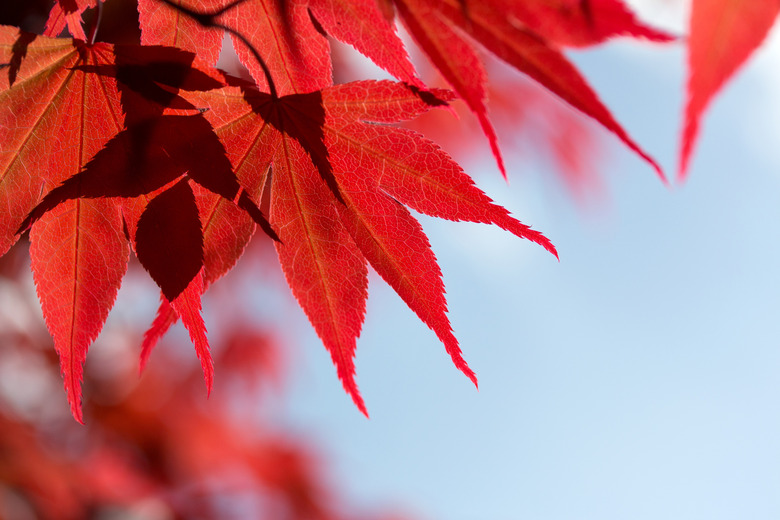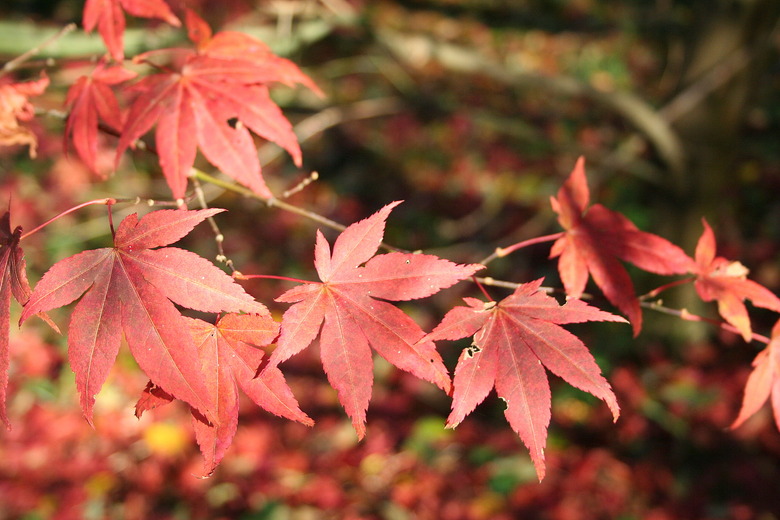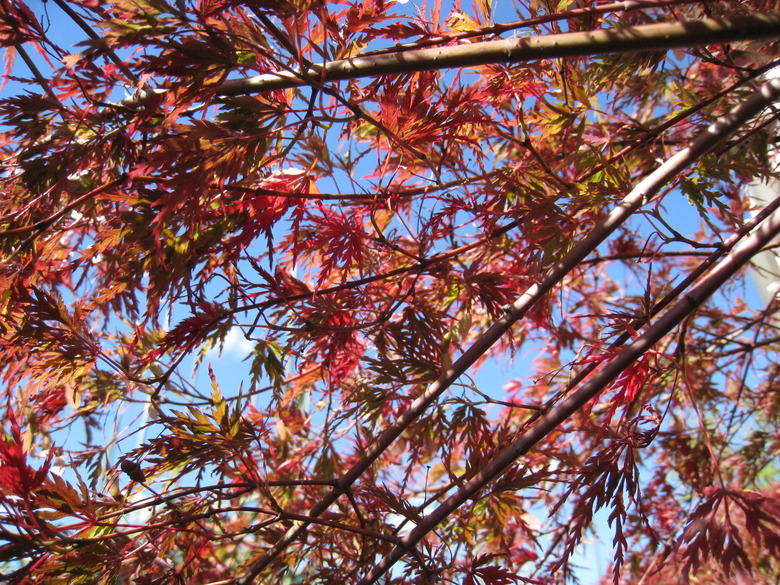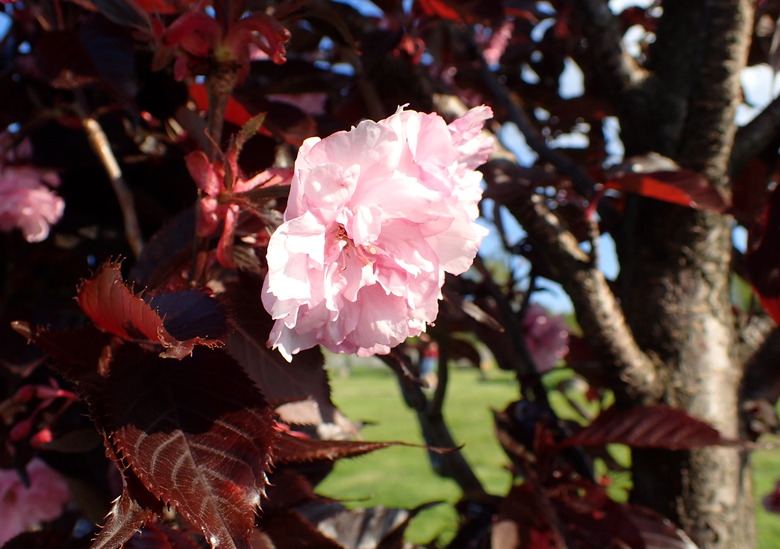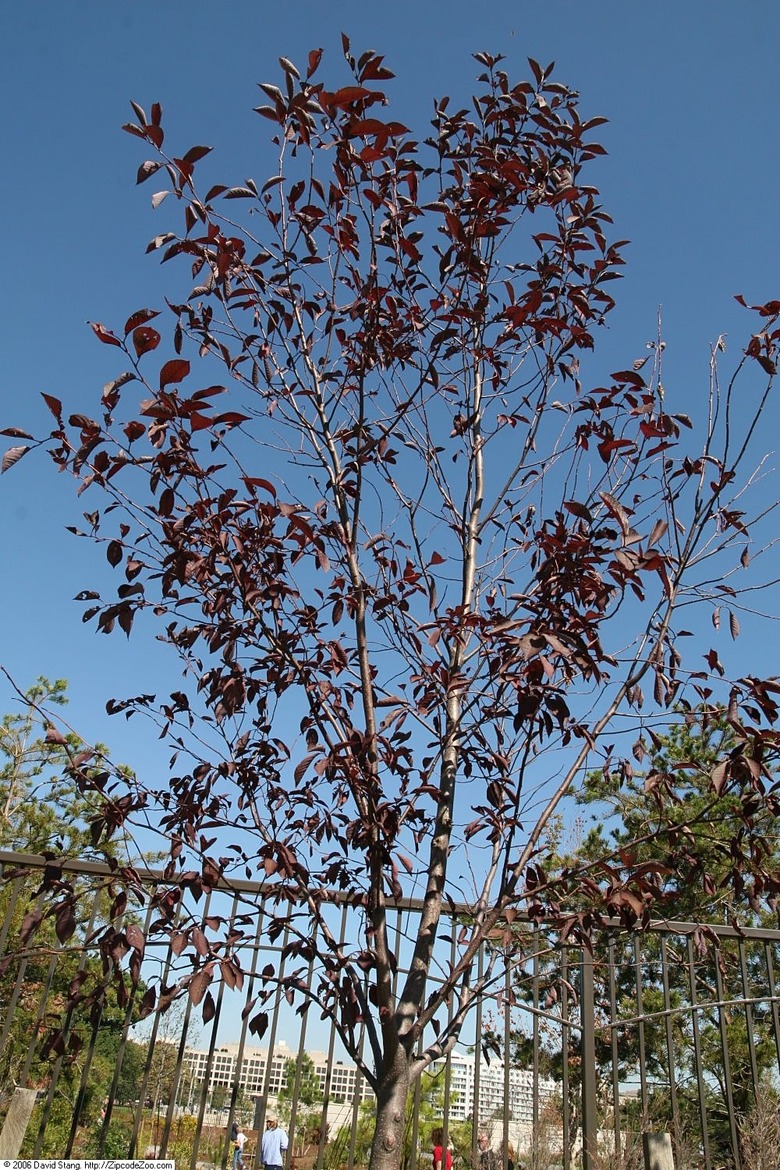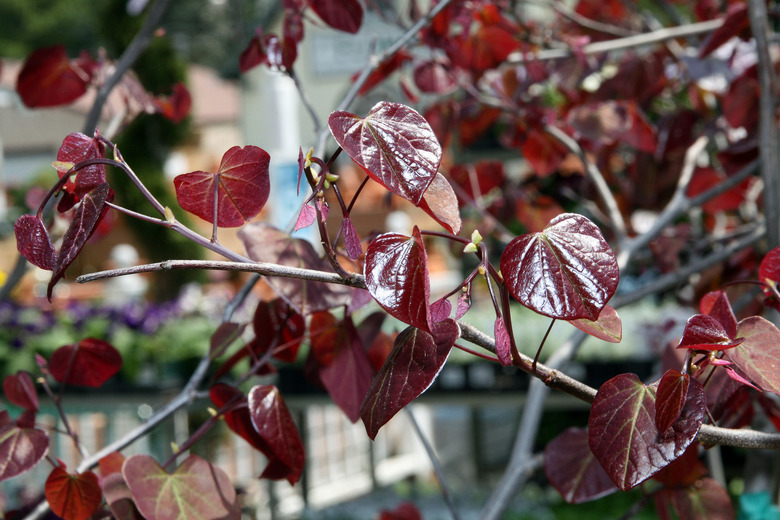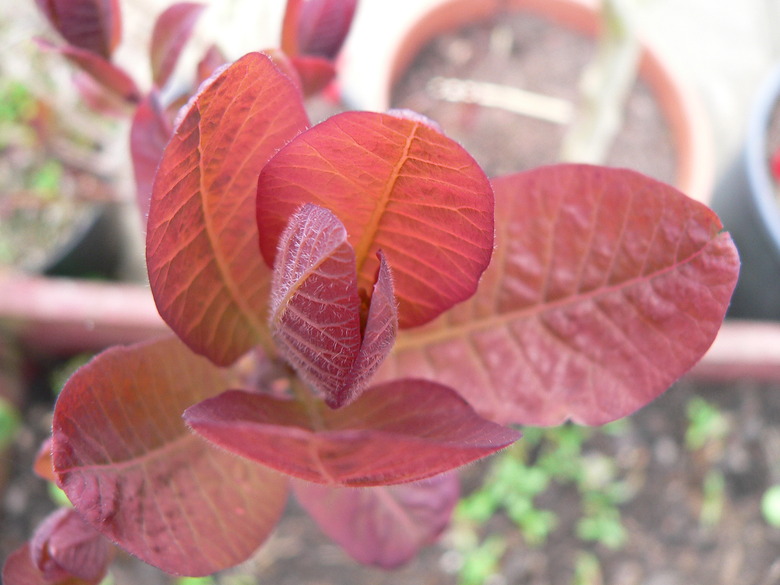What Trees Have Red Leaves?
About 90 species of trees in North America make a flashy contribution to fall color by turning red at the end of summer, according to Appalachian State University. Red leaf trees, however, are much less common in the growing season when the landscape is dominated by the verdant greens of deciduous and evergreen trees.
Red Leaf Maple Varieties
The leaves of most cultivars of red maples (Acer rubrum and Acer palmatum) are green until the fall when they change into the vivid red that makes them the star of the autumn color season. A few, however, do have reddish foliage at other times of the year.
Red-leaf Japanese maple (Acer palmatum var. atropurpureum), hardy in zones 5a to 8b, is among the most recognizable of trees with red leaves. This slow-growing tree rarely reaches taller than 25 feet in height under ideal growing conditions.
Plant these trees in well-draining soil with full to partial sun. Trees in cooler climates remain small, and those in warmer climates may need extra watering. Red to purplish leaves may turn green on some specimens over the growing season, but all healthy trees will have bright red leaves in the fall.
Japanese laceleaf maple (Acer palmatum 'Seiryu') is a notable red-leafed tree for a smaller spot in your garden. The trees, hardy in zones 5a to 9b, grow 10 to 12 feet tall and have a 9 to 15 foot spread. Their weeping shape and lacy leaves make them a striking addition to the landscape.
Plant laceleaf maples in rich, moist, well-drained soil and full or partial sun—make sure the trees get some shade in the afternoon. The North Carolina Extension Gardener recommends mulching the trees to keep the roots cool and the soil moist.
Fruit Trees with Red Leaves
The Royal Burgundy cultivar of the flowering cherry (Prunus serrulata 'Royal Burgundy'), hardy in zones 5a to 8b, has red to burgundy leaves and dark pink flowers that are the precursor to small black fruit late in the summer.
Red-leafed trees are 25 feet tall at maturity, but their life span can be as short as 15 years. Plant Royal Burgundy in moist, well-draining soil in full sun. The ASPCA warns that the stems, leaves and seeds of cherry trees in general are toxic to dogs, cats and horses.
The leaves of the Canada Red and Schubert cultivars of the chokecherry tree (Prunus virginiana), hardy in zones 2 through 7, are green in the spring, becoming purple or red as the growing season progresses. The leaves of Canada Red are typically more red than Schubert.
Chokecherries grow to a height of 30 feet and do best in full sun to partial shade. Showy flowers bloom in April and May.
Other Red-Leafed Trees
The Forest Pansy cultivar of the eastern redbud (Cercis canadensis 'Forest Pansy'), hardy in zones 6a through 8b, gets its name from the small pansy-like, pink or purple flowers that bloom in the spring before the tree leafs out. The red-purple leaves emerge shortly after the tree blooms.
In southern hardiness zones 7, 8 and 9, the leaves fade to purplish-green over the summer. Redbuds grow to 30 feet in height, have a high drought tolerance and do well in clay, loam or sandy soil.
Airy, filamentous panicles of tiny blossoms create smoke-like clouds on Cotinus coggygria giving it its common name, smoke tree. These showy shrubs, hardy in zones 4 through 9, grow to 15 feet tall and provide a dash of contrast in the landscape.
The UC Master Gardener Program of Sonoma County recommends using the plant as an accent or as part of a border. The Grace cultivar of Cotinus coggygria has maroon leaves that turn salmon pink in the fall.
References
- APPSTATE Department of Biology: Why Is Red Fall Color Nearly Absent in Northern Europe but Prevalent in North America?
- North Carolina Extension Gardener: Acer palmatum var. atropurpureum
- North Carolina Extension Gardener: Acer palmatum var. dissectum
- ASPCA: Cherry
- Oregon State University: Prunus virginiana 'Canada Red'
- University of California: Cotinus coggygria
